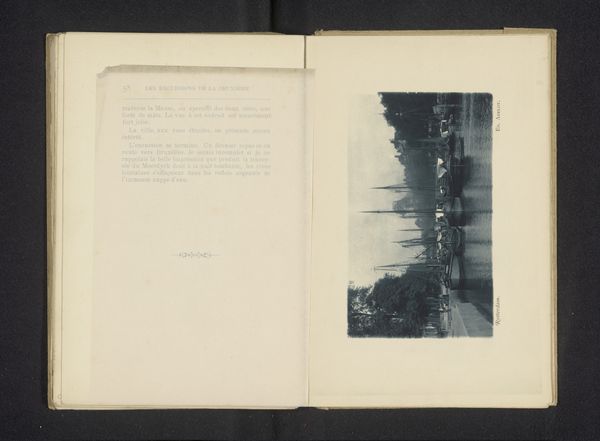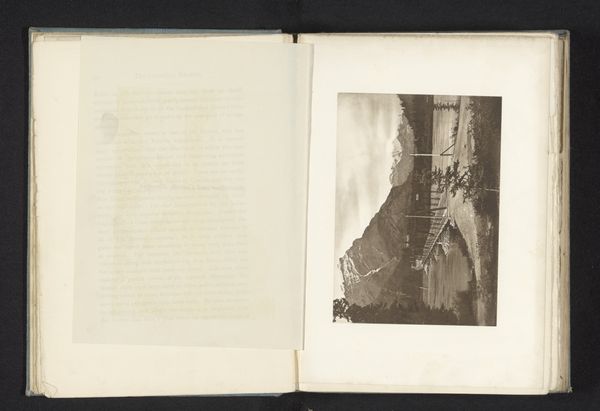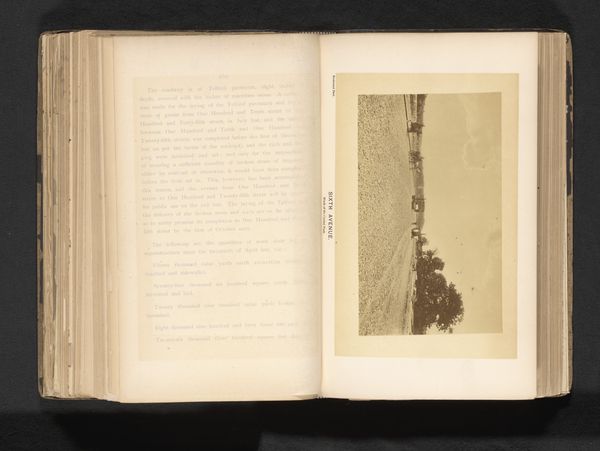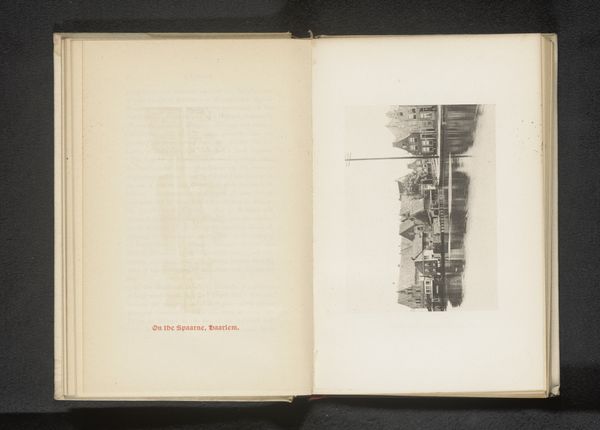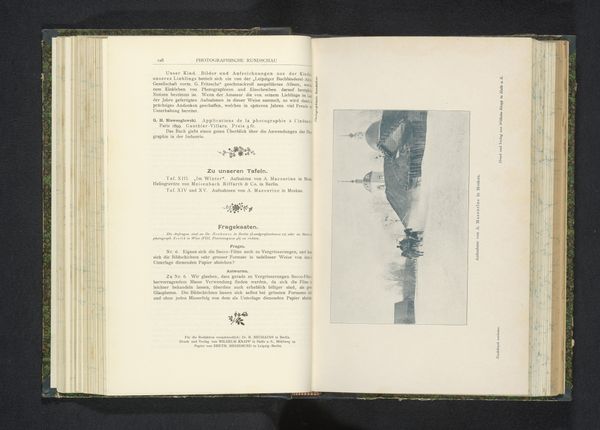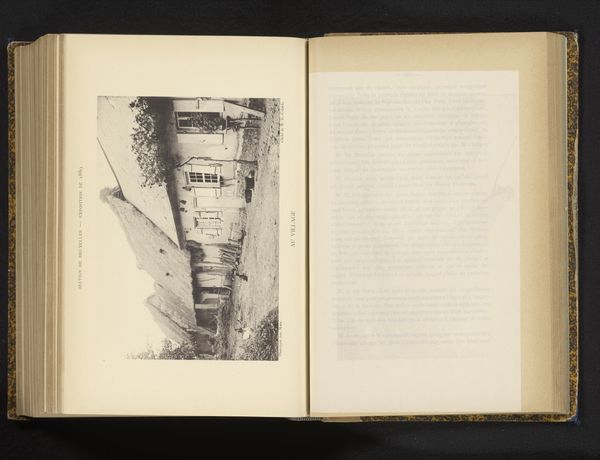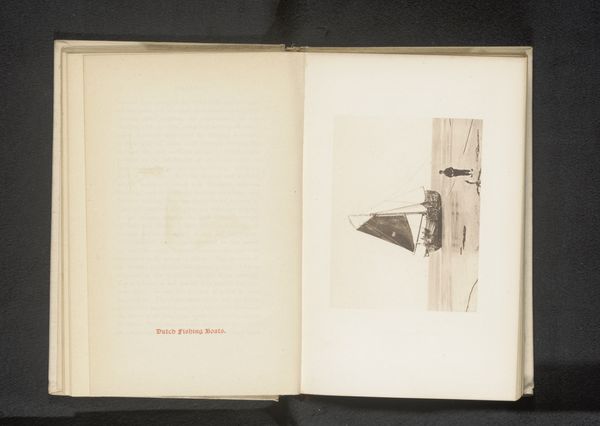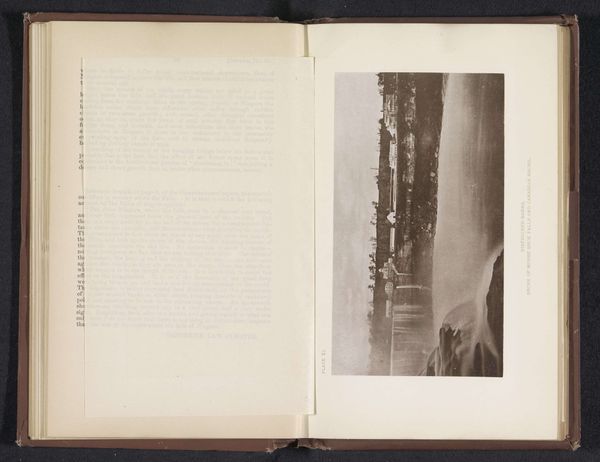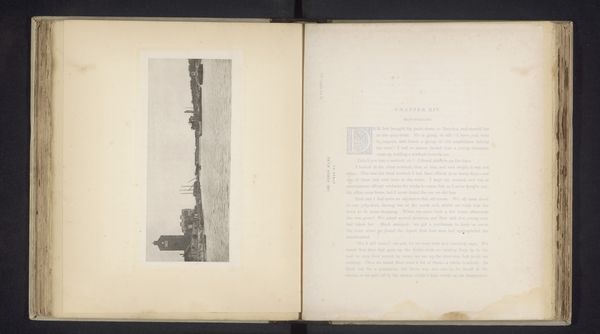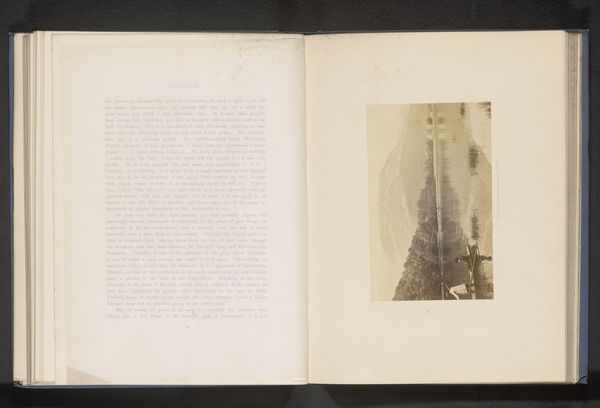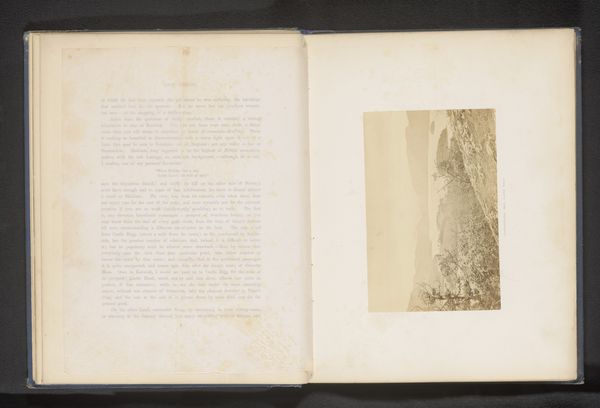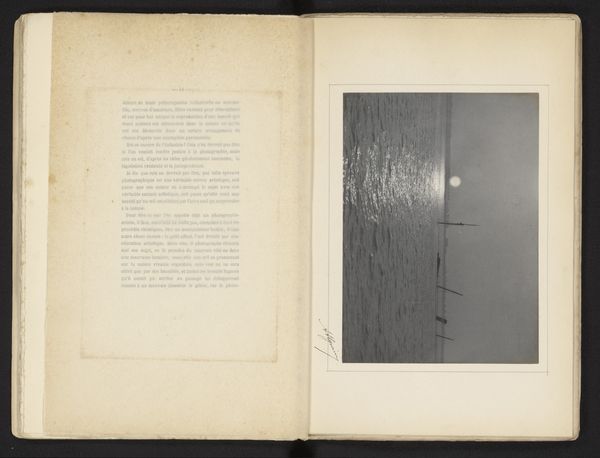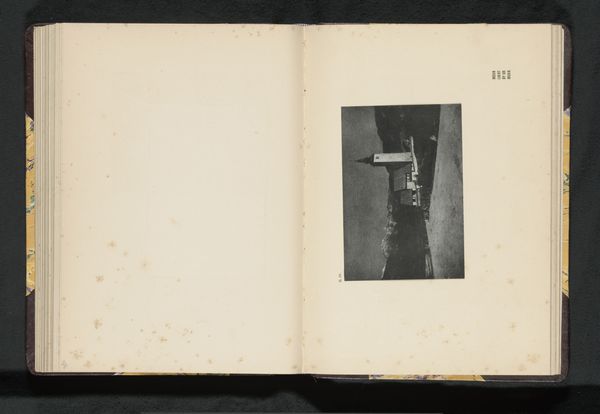
Gezicht op de Maas te Dordrecht, met op de achtergrond de Grote of Onze-Lieve-Vrouwekerk before 1894
0:00
0:00
print, photography, gelatin-silver-print
#
dutch-golden-age
# print
#
landscape
#
river
#
photography
#
gelatin-silver-print
#
cityscape
#
realism
Dimensions: height 88 mm, width 123 mm
Copyright: Rijks Museum: Open Domain
Curator: This is "Gezicht op de Maas te Dordrecht, met op de achtergrond de Grote of Onze-Lieve-Vrouwekerk," or "View of the Meuse at Dordrecht, with the Grote or Onze-Lieve-Vrouwekerk in the background." It's a gelatin silver print, dating from before 1894, by Charles L. Mitchell. Editor: It's undeniably evocative, almost melancholic. The monochrome tones lend it a certain timelessness, despite its subject. There's a striking emphasis on verticality in the composition, directing the eye upwards. Curator: Indeed, the photograph’s realism captures the stark contrasts of 19th-century Dutch society and commerce, visible in the built environment. The grand church tower competes with the mercantile activity on the Maas, visualized through ships dominating the foreground and hinting at global trade networks. Editor: I think that this piece is situated squarely in the tensions of the Dutch Golden Age, even as a later photograph. Notice how these serene cityscapes often elide class disparities and colonial violence, romanticizing urban life. This photo does nothing to foreground the labour of the working class; rather it highlights an economic prosperity they can't partake of. Curator: While the print’s composition doesn't directly challenge or critique its social context, that's less crucial for me. The deliberate framing creates visual interest, such as the reflection of architecture on the water. How do those pictorial strategies evoke emotional reactions for the viewer? I consider those to be quite valid points to analyze, perhaps without necessarily drawing parallels to present day sociopolitical contexts. Editor: I find the absence quite telling. In whose eyes, and for whose pleasure, was this image produced? It demands analysis precisely because of the cultural codes that underpin such aesthetic choices. Curator: Perhaps, and maybe the aesthetic value holds regardless? Editor: Perhaps our engagement should push further to contextualize the inherent ideological standpoints. Curator: That remains a constant tension, no? Context versus the singular image and how it sits visually and structurally in time.
Comments
No comments
Be the first to comment and join the conversation on the ultimate creative platform.

